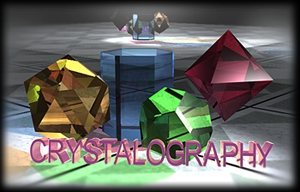
|
|
|||
|
|
Now consider the elements in light red and the ONE in dark red. Oxygen is the real joker in the mineral world, it can combine in ways that make it appear ionic, but it can also combine in ways that make it strongly covalent. The other non-metals, boron, carbon, nitrogen, phosphorus and sulfur can also show differences in behavior, but to a lesser extent. When oxygen combines with the other non-metals it forms very strong bonds, but creates a series of structures that act strongly ionic. Oxygen can combine with carbon to form the carbonate ion, sulfur to make the sulfate ion, boron to make the borate ion and nitrogen to make the nitrate ion. |
|
These ionic structures are very strong, and can combine with the alkali and alkaline metals (those in white at the left side of the table) to form minerals. The minerals have similar physical characteristics to the above halides. CaCO3 (calcium carbonate, mineral: calcite), MgCO3 (magnesium carbonate, mineral: magnesite), BaSO4 (barium sulfate, mineral:barite), CaSO4 (calcium sulfate, mineral: barite), Na2B4O7 • 10H2O (sodium borate, mineral: borax), and KNO3 (potassium nitrate, mineral: saltpeter). They are somewhat soluble in water, and have relatively low hardness. |
|
|
Ionic bonds are created when the elements within the compound tend not to share their electrons. NaCl (sodium chloride, Mineral:Halite) is a strong ionic compound. The chloride ion has an extra electron tightly bound to it giving it a net negative charge. The sodium ion is an electron short giving it a net positive charge. Hence it is the electrical attraction which provides most of the binding force in the solid state. (Remember opposites attract.) Ionic materials tend to be easily soluble in water or other polar solvents. This type of bonding is relatively weak and hence minerals like; Halite (NaCl), Fluorite (CaF2), Barite (BaSO4), Calcite (CaCO3), and Anhydrite (CaSO4) all tend to be soft. |
|
|
Cleavage and fracture are also related to the crystal structure of a mineral. Cleavage is the tendency of a mineral to break in straight line forming a clean, flat surface. Minerals with high levels of symmetry and weak elemental bonding tend to have excellent cleavage. Calcite (CaCO3), Fluorite (CaF2), Anhydrite (CaSO4) all have perfect cleavage. They have ionic (weak bonding) and belong to higher order (more symmetry) crystal groups. Diamond, although the hardest mineral with very good covalent bonding, also has perfect cleavage because it belongs to high symmetry group too. |
|
ral with v |
|
ral wi |
|
Notice the highly ordered and symmetrical lines of atoms in these structures. Combine that with ionic bonding and it is not surprising that these minerals are soft and have excellent cleavage. d covalent bonding, also has perfect cleavage because it belongs to high symmetry group too. |
|
|
|
|
|